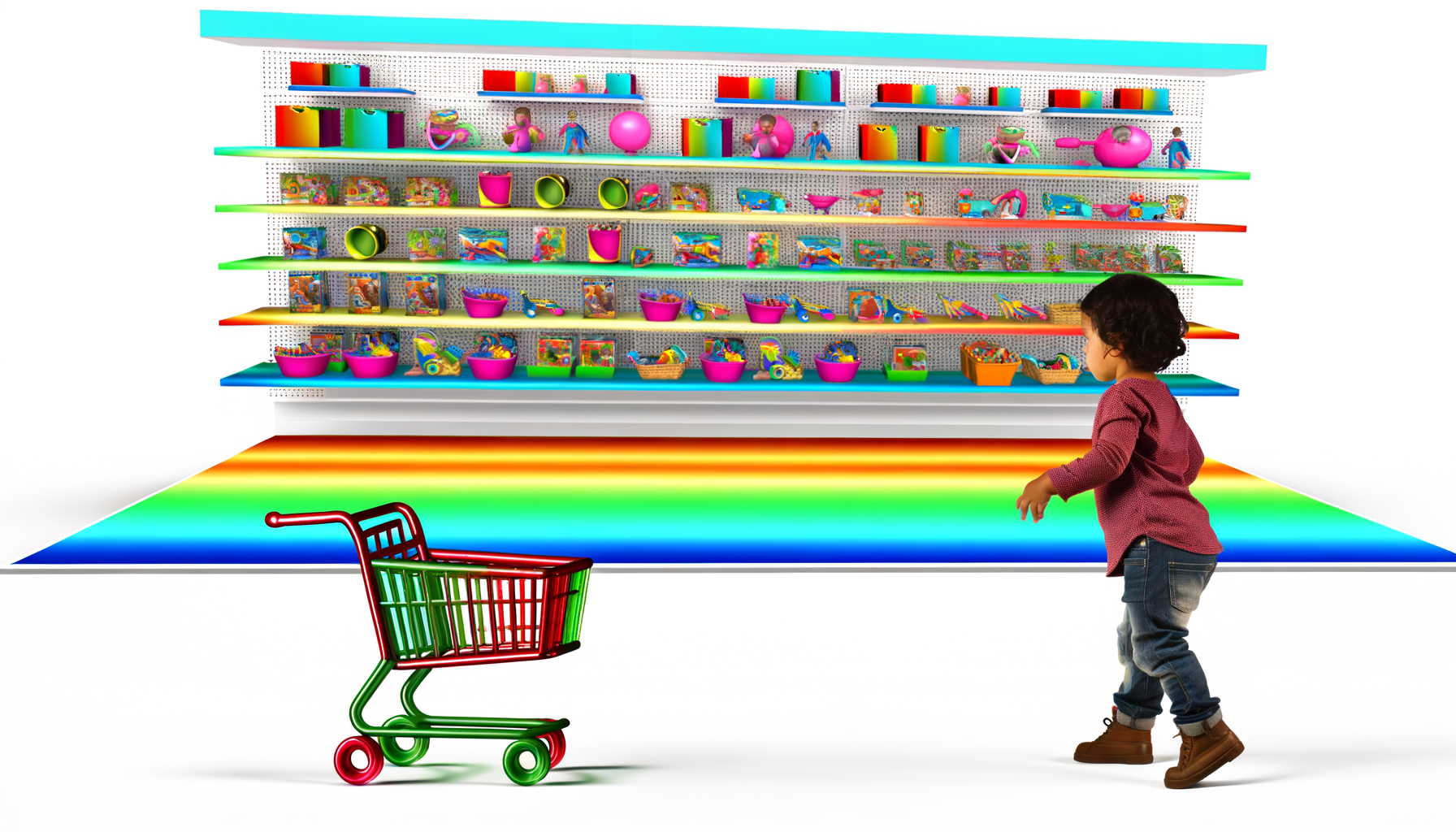
Using SEO for a children’s toy store online involves a strategic approach to increase the visibility of your store on search engine results pages. By optimizing your website content, building backlinks, and focusing on user experience, you can attract more traffic to your site and ideally convert that traffic into sales. This process includes conducting keyword research specific to your niche, optimizing product pages with relevant and descriptive titles and descriptions, and creating valuable content that speaks directly to parents, caregivers, and gift buyers searching for the perfect toy.
Understanding SEO for a Children’s Toy Store
Search Engine Optimization, or SEO, is the art and science of making your website more attractive to search engines like Google. For a children’s toy store, this means ensuring that when someone types in search terms related to kids’ toys, your store shows up as high as possible in the rankings. But how is this achieved? Let’s start with the fundamentals.
Keyword Research
Before you start making any changes to your website, you need to understand the terms your potential customers are using when they search for products you sell. Tools like Google’s Keyword Planner or Ahrefs can help you find a mix of high-volume and long-tail keywords that are relevant to your inventory. Remember to consider seasonal trends and events, such as holidays or back-to-school periods, which can influence search behavior.
On-Page Optimization
Once you have a list of keywords, it’s time to optimize your website’s pages. This includes:
- Title tags: These are the clickable headlines in search results. Include the most relevant keyword for each product and make it enticing.
- Meta descriptions: Although not a direct ranking factor, these provide an overview of what’s on the page and can improve click-through rates.
- Product descriptions: Make them descriptive, keyword-rich, and high-quality. Avoid manufacturer’s descriptions as they can result in duplicate content penalties.
- Image alt text: This helps search engines understand your images. Use descriptive, keyword-rich text here as well.
- User-friendly URLs: Keep URLs short, readable, and inclusive of keywords when appropriate.
Technical SEO
Technical SEO involves ensuring your site is structured in a way that search engines can easily crawl and index. Key aspects include:
- Mobile-friendliness: With mobile search dominating, your site must look and perform well on smartphones and tablets.
- Site speed: A slow site frustrates users and is penalized by search engines. Optimize image sizes, leverage browser caching, and consider a content delivery network (CDN).
- Secure Socket Layers (SSL): A secure site not only protects user data but is also a ranking factor.
- Clear site architecture: Structure your website so that it’s easy for search engines and users to find what they’re looking for.
- Sitemap: Submit a clear and updated sitemap to search engines to help them index your site.
Local SEO
If your children’s toy store has a physical location, local SEO is crucial. Ensure that your business is listed on Google My Business and that your store’s name, address, and phone number (NAP) are consistent across all platforms.
Content Marketing and Link Building
SEO isn’t just about making sure your site is technically perfect. It’s also about proving to search engines that your site is a hub of valuable information.
Creating Quality Content
Publishing engaging, informative content is a big part of SEO. Blog posts, buying guides, reviews, and educational content help establish your site as an authority. This content should:
- Address your customer’s questions and concerns.
- Include relevant keywords without stuffing them unnaturally into the text.
- Be formatted with headers, bullets, and lists for readability.
- Include internal links to products and other relevant content on your site.
- Be shared across social media and other channels to drive traffic.
Link Building
Search engines use links as a vote of confidence. Obtaining backlinks from reputable sites can be challenging, but it is a powerful way to increase your site’s authority. Some tactics include:
- Creating shareable content that naturally earns links.
- Reaching out to influencers and bloggers in your niche for collaborations.
- Participating in forums or groups related to children’s toys and parenting, providing helpful advice and linking back to your site when relevant.
- Guest posting on relevant websites with a link back to your site.
User Experience (UX)
SEO is not just about satisfying search engines—it’s also about providing a great experience for your visitors.
Creating a User-Friendly Website
An easy-to-navigate website will keep visitors on your site longer, reducing bounce rates which can impact your SEO rankings.
- Make navigation intuitive, with a well-organized menu and a clear path to purchase.
- Include customer reviews and testimonials.
- Offer live chat support to answer questions in real time.
- Ensure that contact information is easily accessible.
- Use high-quality images and videos to showcase products.
Optimize for Conversions
Ultimately, you want your website’s visitors to make a purchase.
- Use clear calls to action (CTAs).
- Streamline the checkout process.
- Offer multiple payment options.
- Have a clear, easy-to-understand return policy.
Measuring SEO Success
No SEO strategy is complete without the ability to track its success. Use analytics tools like Google Analytics to monitor traffic, rankings, and conversions. Regularly review performance and adapt your strategy as needed. Look at metrics like:
- Organic traffic
- Keyword rankings
- Bounce rate
- Conversion rate
- Backlinks
Staying Current with SEO Trends
SEO is always evolving, and what works today might not work tomorrow. Keep yourself informed about the latest SEO news, algorithm updates, and best practices. It’s also essential to keep an eye on what your competition is doing.
Finishing Thoughts
Optimizing your children’s toy store for SEO is an ongoing journey, but the potential rewards in terms of increased visibility, traffic, and sales are significant. Start with a solid foundation of keyword research and on-page optimization, then build your authority with quality content and links. Never underestimate the importance of a great user experience, and always stay adaptable to the ever-changing landscape of SEO. With dedication and a willingness to learn and adapt, your online toy store can climb to the top of the search engine rankings and stay there.
Frequently Asked Questions
What is SEO and how can it benefit my children’s toy store online?
SEO, or Search Engine Optimization, is the practice of increasing the quantity and quality of traffic to your website through organic search engine results. By optimizing your website for search engines, your toy store can improve its visibility for relevant searches. This means that when potential customers are looking for toys online, they are more likely to find your store, leading to increased traffic and potential sales.
What are the first steps in using SEO for my online toy store?
The first steps in utilizing SEO for your online store include keyword research to identify terms your potential customers are searching for, optimizing your website’s structure and content with these keywords, and ensuring your site is mobile-friendly and fast-loading. Also, create high-quality, engaging content that adds value for your customers, such as toy reviews or age-appropriate play guides.
How do I perform keyword research for my products?
Start by brainstorming terms related to your products and your brand. Utilize tools like Google’s Keyword Planner, SEMrush, or Ahrefs to find keywords that have a decent volume of searches but not too much competition. Think about what parents might be searching for – specific types of toys, educational toys, toys for certain age groups, etc. Also, consider long-tail keywords, which are more specific phrases that may have a lower search volume but a higher conversion rate because they are more targeted.
What on-page SEO factors should I focus on for my toy store?
On-page SEO factors that can impact your toy store’s search engine rankings include title tags, meta descriptions, header tags, and image alt text. Ensure that these elements contain relevant keywords and accurately describe your page content. Furthermore, make sure your content is well-written and informative, and that your site has a clear, easy-to-use navigation structure.
How can I make my online toy store’s website mobile-friendly?
You can make your website mobile-friendly by implementing a responsive design that adjusts to various screen sizes, ensuring fast loading times on mobile devices, and making navigation touchscreen-friendly. Also, consider the size of buttons and links, readability of text on small screens, and overall mobile user experience.
What kind of content should I create for my toy store to help with SEO?
Create a variety of content that will engage and inform your audience, such as blog posts, toy reviews, buying guides, how-to articles for playtime, and educational resources. High-quality, original content can attract visitors to your site and encourage other sites to link to it, thereby improving your search engine rankings.
How can I build backlinks to improve my toy store’s SEO?
You can build backlinks – which are links from other websites to yours – by creating shareable content, reaching out to influencers in your niche, and engaging with online communities related to children’s toys and parenting. Also, consider guest posting on reputable sites, where you provide valuable content in exchange for a link back to your store.
What are some common SEO mistakes to avoid with my toy store?
Avoid common SEO mistakes such as keyword stuffing, neglecting mobile users, having slow loading times, using duplicate content, and failing to measure your SEO performance with analytics tools. It’s important to maintain a natural and user-friendly experience on your site while strategically optimizing for search engines.
How can I track the success of my SEO efforts for my toy store?
Track your SEO success by using tools like Google Analytics and Google Search Console. Monitor your site’s traffic, bounce rate, average session duration, and conversions. Keep an eye on your keyword rankings, the number of backlinks, and any improvements in search visibility. Regularly analyzing this data will help you make informed decisions about your SEO strategy and show where there may be room for improvement.
Is local SEO important for an online toy store?
If your online store also has a physical location, local SEO is important. Optimize your Google My Business listing, ensure local listings and citations are accurate, and include location-specific keywords in your website’s content. Positive reviews and local backlinks can also improve your local SEO performance.






